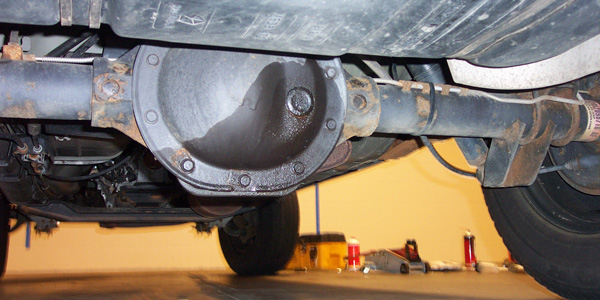
Chassis parts take a beating. Potholes, rough roads, curbs and even everyday driving all hammer away at the ball joints, control arm and sway bar bushings, tie rod ends, idler arms, springs and struts mile after mile. Ball joints wear out. Tie rod ends and idler arms develop play. Control arm bushings crack, crush and collapse. Springs sag or break. Struts can bind up, leak fluid and lose their ability to dampen suspension motions.
Road salt also is a killer of chassis parts, corroding, pitting and weakening critical metal surfaces. The more miles on the odometer and the older the vehicle, the greater the chance is that it will need to have some of its chassis parts replaced.
Worn or damaged chassis parts are fairly easy to diagnose, but they are often overlooked when changing oil, rotating tires, replacing brake pads or performing other routine maintenance. In many instances, nobody looks for worn or damaged chassis parts unless the vehicle is experiencing an obvious problem like abnormal or rapid tire wear, a handling or steering problem, or chassis noise. A visual inspection, alignment check or road test will usually verify the need for new chassis parts.
Tire dealers help generate a lot of chassis parts sales because they will often do a suspension inspection and/or alignment check when a customer buys a new set of tires – especially if the old tires are worn and show signs of toe or camber misalignment.
When the wheels are out of alignment because of worn or damaged steering or suspension parts, the wheels cannot be realigned unless the bad parts are replaced. Loose parts with too much play cannot hold the wheels in alignment. And some parts, like worn ball joints and tie rod ends, can be dangerous if they are in poor condition. A failure may cause a loss of steering control.
Ball joints should be replaced when the amount of play or movement in the joint exceeds the maximum allowed by the vehicle manufacturer. The amount of wear that can be tolerated in a joint varies from one vehicle application to another. Some allow no visible play while others can handle up to .250 inch or more of play and still be considered okay. Some OEM joints have built-in wear indicators that also can be inspected to determine if replacement is needed.
Replacing most chassis parts also requires realigning the wheels after the new parts have been installed. On many late-model vehicles, factory adjustments for camber and caster may be limited or unavailable because of the design of the suspension. There are options, however, thanks to the availability of aftermarket alignment kits.
When caster corrections are needed, the top of the strut, the top or bottom of the steering knuckle or the location of the upper or lower control arm must be shifted forward or aft to make the change. If there are no adjustments or the range of the factory adjustment isn’t enough to bring caster back within specifications, you may be able to install an adjustable strut rod, eccentric control arm bushing, strut caster plate or shims to solve the problem. Such kits are available for a wide range of applications, including Subaru 4X4s, Ford light trucks and others.
When camber is out of specifications, the top of the wheel needs to be moved in or out to make the correction. If the struts have nonadjustable camber bolts at the bottom, or no camber slots at the top, an aftermarket camber kit can typically provide the adjustment you need. Camber bolt kits replace the nonadjustable OEM bolts with ones that have eccentric camber plates for the tops of the struts typically require some cutting and/or drilling to install so the top of the strut can be moved in or out as needed to realign the wheels.
On independent rear suspensions, camber corrections can often be made by installing shims, offset bushings or adjustable control arms that provide several degrees of adjustment.












